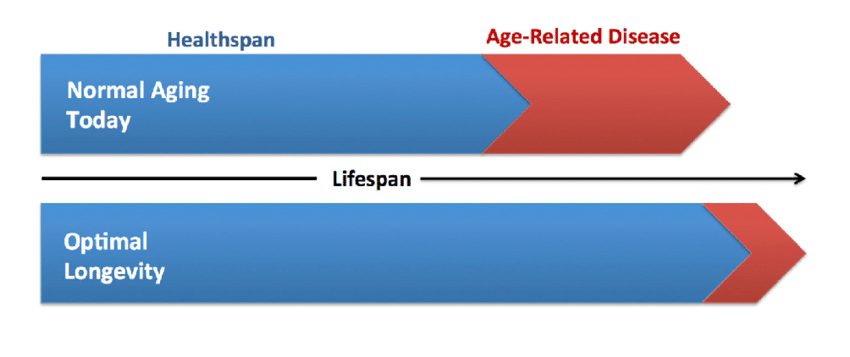
Why is this? The answer lies, in large part, in telomere length and health. Like most health measures, telomere health is partly influenced by genetics and mostly determined by how we live our lives.
And telomere health isn’t just about outward appearance. In many ways, what’s happening on the outside correlates with what’s happening on the inside, including our susceptibility to chronic pain and illness.
The good news is that regardless of what my telomere status is now, I can improve it. And, for some of us, life changes can result in a positive cellular legacy for the next generation.
What are telomeres?
Telomeres are repeating segments of noncoding DNA that live at the ends of chromosomes. Each is wrapped in a sheath of proteins. Telomeres do the important work of protecting cell DNA from damage.
What does that mean? Think of football for a minute. The offensive line protects the quarterback from being hit and damaged. Telomeres are the offensive line for our DNA.

With each cell division, the telomeres get a little more beat up and a little shorter as they do their protective work.
Want another analogy? Picture shoelaces.
Aglets are the plastic pieces on the ends of shoelaces—telomeres as the aglets for DNA replication. When aglets get ragged and tattered, it’s hard to lace our shoes. When telomeres become frayed and short, it’s hard for our DNA and cells to replicate accurately.
Senescent cells control the aging process.
Eventually, the telomeres get so short that cell division stops. When this happens, the cells are senescent. These are old worn-out cells like the old worn-out shoes above.

Senescent cells can leak proinflammatory substances, making humans vulnerable to pain and chronic illness. Senescent cells impact the cells around them like a bad apple in a barrel. Eventually, many senescent cells will undergo a pre-programmed death.
Telomeres and “inflammaging”
When a cell’s genes are damaged, or its telomeres are too short, the cell knows that its precious DNA is in danger. The cell sends molecules that can travel to other cells and call for help.
The problem is deranged telomeres won’t allow helpful molecules into the cell. A shortened telomere can signal for help for months and then won’t accept the help that arrives. That cell becomes like the rotten apple that spoils the batch.
The molecules that call for help involve chemicals like pro-inflammatory cytokines that travel through the body. This leads to system-wide chronic inflammation. The whole thing is a positive feedback loop.
Chronic inflammation interferes with the normal functioning of body tissues throughout the body. Inflammaging is a factor in all of the diseases of aging. This is why such a big part of disease prevention involves controlling inflammation and protecting telomeres. Cells with short telomeres send out constant inflammatory signals.
What is the difference between “diseasespan” and healthspan?
Lifespan is how long you live. Healthspan is the number of years of our healthy life. Diseasepan is the years we live with disease processes that interfere with our quality of living.
Unfortunately, modern living is hard on our bodies despite advances in medicine and science. We’ve normalized the idea that we spend our last years experiencing pain and sickness. But this is not inevitable.
In a perfect world, we’d have a very short diseasespan and enjoy good health until death. Healthy telomeres contribute to optimal longevity and increase our healthspan.
Though lifespans have increased, chronic diseases have become endemic.

So what can we do? A lot.
Work on the foundations.
Anything that decreases inflammation will support telomere health. Addressing the four pillars of health is a great place to start. Small changes to sleep, stress, microbiome, and movement can have big impacts.
Inflammatory behaviors will accelerate telomere damage. That includes exposure to stress, processed foods, household toxins, omega 6s, excessive exercise, gut dysbiosis, sugar, etc.
Conversely, anti-inflammatory behaviors will help repair telomeres. That includes deep sleep, whole foods, restorative activity, time in nature, mindfulness practices, social connection, omega 3s, self-compassion, reframing threats as opportunities, and so on.
And if you need a boost?
Increased stress has been shown to correlate with shorter telomere length. Stellate Ganglion Blocks are essentially re-boots of the autonomic nervous system that improve PTSD, depression, anxiety, and more.
Activated Oxygen Therapy has also been shown to reverse cellular aging.
IV therapy delivers powerful, bioavailable antioxidants and anti-inflammatory supplements to your body in a form the body can use immediately.
What else?
There are precision therapies for specific genetic profiles. To find out whether you have genes that make you susceptible to shortened telomeres and to learn what therapies will work best for your body, lab work, and genomics testing are a great place to start.
Using genomics software, we check for the SNPs (single nucleotide polymorphisms) that contribute to shortened telomeres: TERT, TERC, RTEL1, ACYP2, OBFC1, and SIRT1.
Then, we provide targeted guidance on improving telomere health.
Want to learn more?
Dr. Elizabeth Blackburn and Dr. Elissa Epel have written a great, accessible book called The Telomere Effect.

As always, connect with Boost to get support on your health journey.

